SAR AW139 Dropped Object: Attachment of New Hook Weight (Sapporo City Fire Department JA17AR)
On 16 February 2020 objects were dropped from Leonardo AW139 SAR helicopter JA17AR of the Sapporo City Fire Department Air Corps during rescue hoist training at Ishikari City, Hokkaido, Japan.
The Japan Transport Safety Board (JTSB) explain in their safety investigation report (issued 18 February 2021) that the helicopter was undertaking the final of 6 hosting exercises planned for that flight.
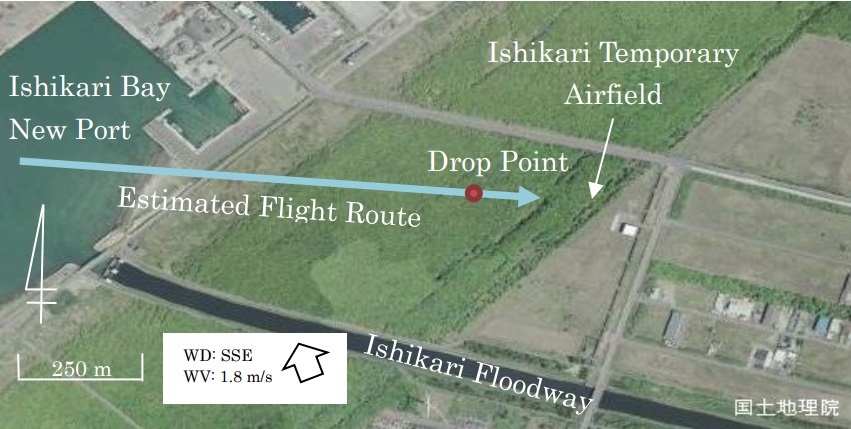
Estimate Route: Sapporo City Fire Department SAR Leonardo AW139 JA17AR Dropped Object Serious Incident (Credit: JTSB)
The right-hand door was opened, a rear crew member attached two connected 5lb ARS Hoist Hook Weights (a total mass of 10 lb, 4.54 kg) to the hook to increase stability and let go of the hoist hook.
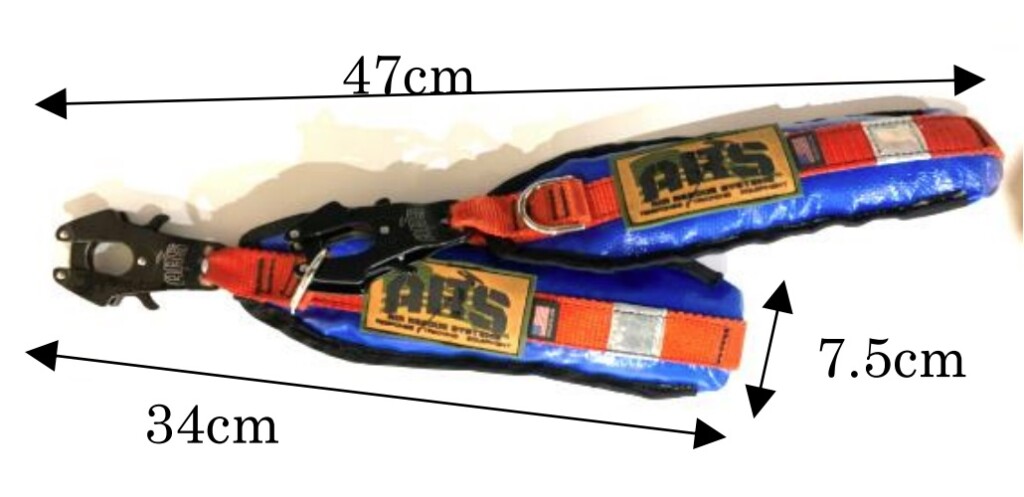
ARS Hoist Hook Weights: Sapporo City Fire Department SAR Leonardo AW139 JA17AR Dropped Object Serious Incident (Credit: JTSB)
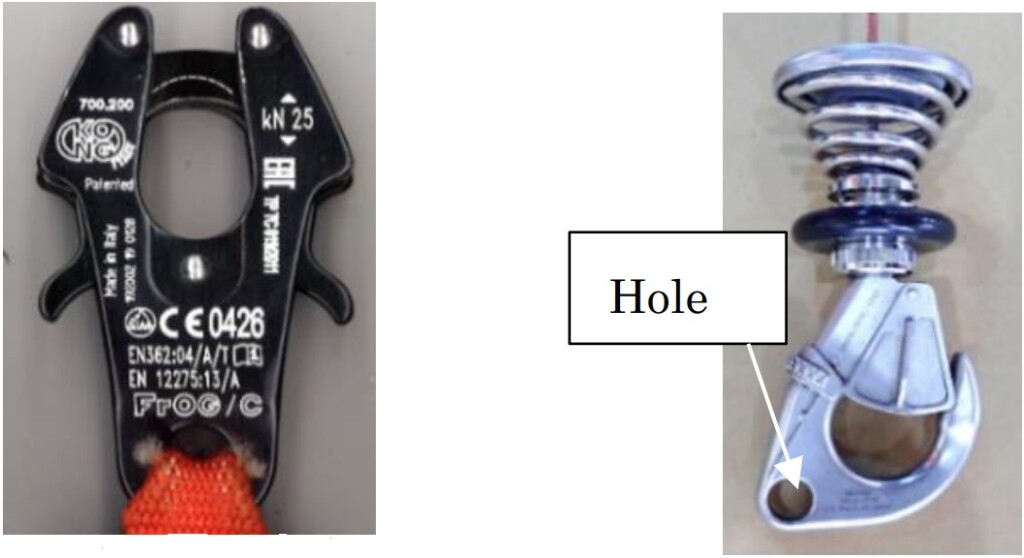
ARS Hoist Weight Hook (left) and the Hoist Hook with Attachment Hole (right): Sapporo City Fire Department SAR Leonardo AW139 JA17AR Dropped Object Serious Incident (Credit: JTSB)
The weights however “came off from hoist hook hole and dropped from altitude 180 ft (55 m)”. They were subsequently found in the national forest near the airfield. They had not hit anyone but the Dropped Objects Prevention Scheme (DROPS) calculator confirms this as a potentially fatal incident.
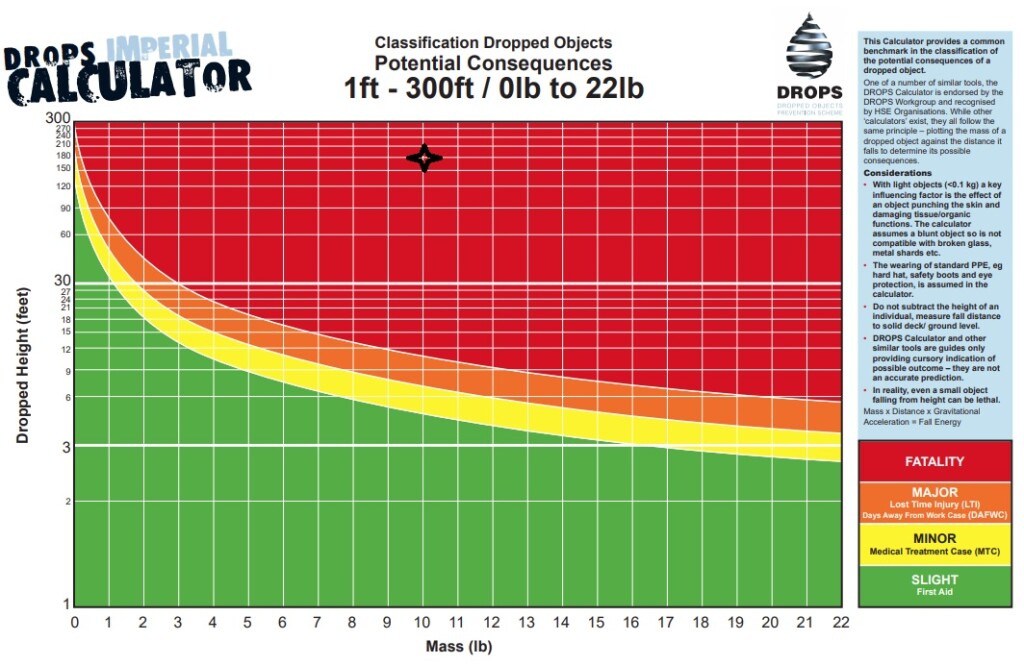
Injury Potential: Sapporo City Fire Department SAR Leonardo AW139 JA17AR Dropped Object Serious Incident (Credit: DROPS Calculator annotated by Aerossurance)
JTSB Safety Investigation
The JTSB report that upon examination no defects were found with either the hoist hook or the attachment hook on the weights, a component also widely used on mountain-climbing gear. The investigators comment that:
The weight hook can be opened by squeezing levers on the both side and remains open. When you insert an object to hook, the object pushes the guide and close the hook. The weight hook consists of two hook-shaped parts that are overlapped symmetrically and attached with a shaft, and the spring is pushing the two parts to close from both sides.
ARS Hoist Weight Hook Mechanism: Sapporo City Fire Department SAR Leonardo AW139 JA17AR Dropped Object Serious Incident (Credit: JTSB)
When the hook is closed, the spring force is applied in a direction to close, and when it is open, the force is applied in a direction to open. When you connect the weight to the hoist hole it is difficult to visually confirm situation of the weight hook whether it is open or closed for the weight hook works inside the hole.
The hook weights had only recently been purchased by the Fire Department, differed from the traditional Karabiners and had only been used “a few times”.
Upon introducing the weights, rescue members conducted familiarity training to confirm their usability and installation certainty, but did not anticipate the possibility that the weight hook may be disengaged.
Fortuitously video footage was available of the incident to aid the investigation.
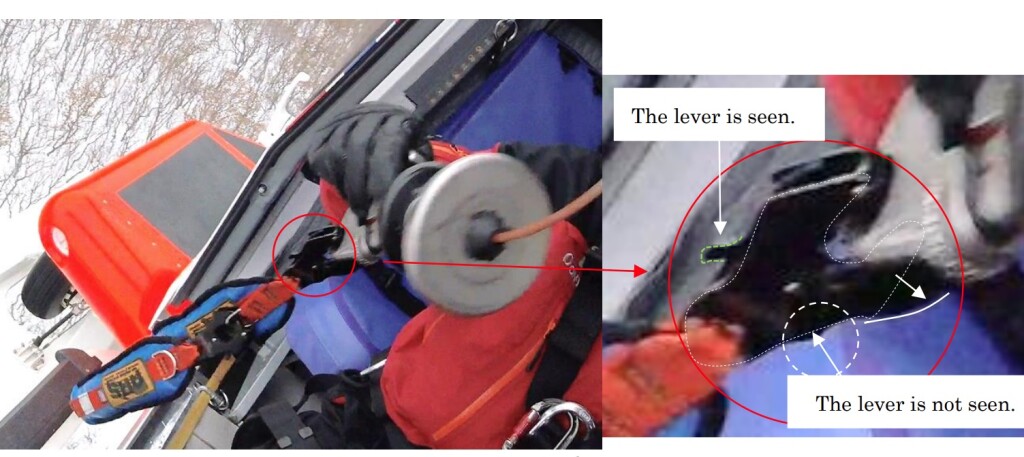
Video Still: Sapporo City Fire Department SAR Leonardo AW139 JA17AR Dropped Object Serious Incident (Credit: JTSB)
The enlargement of the hoist hook image…
…shows that the lever on one side can be seen, but the other side cannot. In addition, the black upper part of the hook seems to be open on its right side. From this, it was confirmed that one side of the hook was open when the weights were released.

Video Still: Sapporo City Fire Department SAR Leonardo AW139 JA17AR Dropped Object Serious Incident (Credit: JTSB)
The image above shows show that the crewmember placing their hands on the lever when attaching the weights to the hoist hook hole.
The instruction manual of the hook manufacturer, describes a warning that it should never hold the lever during connection. However, when they purchased the weight[s], no manual was attached.
The crew member confirmed they were aware of the need to apply tension to confirm secure attachment but unconsciously omitted that check.
During testing, it was found that weights were able to hang as shown below.
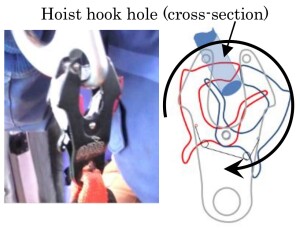
ARS Hoist Weight Hook Mechanism Misaligned: Sapporo City Fire Department SAR Leonardo AW139 JA17AR Dropped Object Serious Incident (Credit: JTSB)
If the weight was put outside in this state, weights would sway to the left, and therefore, the weight hook would turn clockwise as the arrow indicates. It was confirmed due to the shape of the hook tip, the hoist hook opened the left side of the weight hook, so both sides of the hook were opened, and weights were unhooked.
JTSB Probable Cause
The JTSB concludes that the probable cause of this serious incident was the weight hook was almost certainly not properly closed when attached on the hoist hook, and when the weights with the hoist hook were released [i.e. deployed] outside of the rotorcraft, the [weight’s] hook opened and weights dropped.
Safety Lessons & Actions
JTSB comment that:
When introducing new equipment, it is necessary to confirm in advance, the usage including appropriate selection, and sufficiently identify the risk factors.
The Sapporo City Fire Department Air Corps took following safety actions.
- They suspended to use this weight.
- Revised the confirmation procedures when positioning the weight on the hoist hook as follows. 1) The weight installation work shall be done inside the aircraft 2) After the weight installation, it shall be confirmed by applying tension 3) The connection state of weights shall be cross-checked by two crew members and only then the weights would be untethered from the aircraft
Safety Resources
The European Safety Promotion Network Rotorcraft (ESPN-R) has a general helicopter safety discussion group on LinkedIn and a Hoist Operation Safety Promotion LinkedIn group.
ESPN-R has issued the Helicopter Hoist Operator Training Guide. You might also be interested in these Aerossurance articles:
- Fatal Fall From B429 During Helicopter Hoist Training
- Hoist Assembly Errors: SAR Personnel Dropped Into Sea
- USAF Helicopter Hoist Training Accident
- Fall From Stretcher During Taiwanese SAR Mission (NASC AS365N2 NA-104)
- Fatal Taiwanese Night SAR Hoist Mission (NASC AS365N3 NA-106)
- Fatal Powerline Human External Cargo Flight
- SAR Helicopter Loss of Control at Night: ATSB Report
- Swedish SAR AW139 Damaged in Aborted Take-off Training Exercise
- Fatal Taiwanese Night SAR Hoist Mission (NASC AS365N3 NA-106)
- NTSB Investigation into AW139 Bahamas Night Take Off Accident
- AW139 Brownout Accident with the Nigerian VP Aboard
- Fukushima Police Leonardo AW139 Accident: JTSB Update
- Sécurité Civile EC145 Mountain Rescue Blade Strike
- UPDATE 15 May 2021: Military SAR H225M Caracal Double Hoist Fatality Accident
- UPDATE 7 November 2021: Italian Alps AW139 Mountain Rescue Hoisting Blade Strike
- UPDATE 27 November 2021: TCM’s Fall from SAR AW139 Doorway While Commencing Night Hoist Training
- UPDATE 19 February 2022: SAR Hoist Cable Snag and Facture, Followed By Release of an Unserviceable Aircraft
- UPDATE 26 November 2022: Guarding Against a Hoist Cable Cut
- UPDATE 14 May 2023: HH-60L Hoist Cable Damage Highlights Need for Cable Guards
SAR Consultancy: Procurement, Tenders, Contacts and In-Service Assurance and Aviation Advice
In September 2017 one European Coast Guard selected Aerossurance to be their new aviation consultants after a competitive tender with 7 bidders. In July 2018 Aerossurance started work supporting a second European Coast Guard with a procurement project. The Aerossurance team is and has supported humanitarian aid agencies, air ambulance charities, military air arms, lighthouse authorities, environmental agencies and blue chip energy companies on other emergency service and special mission aviation projects around the world.
The Tender Trap: SAR and Medevac Contract Design: Aerossurance’s Andy Evans discusses how to set up clear and robust contracts for effective contracted SAR and HEMS operations.

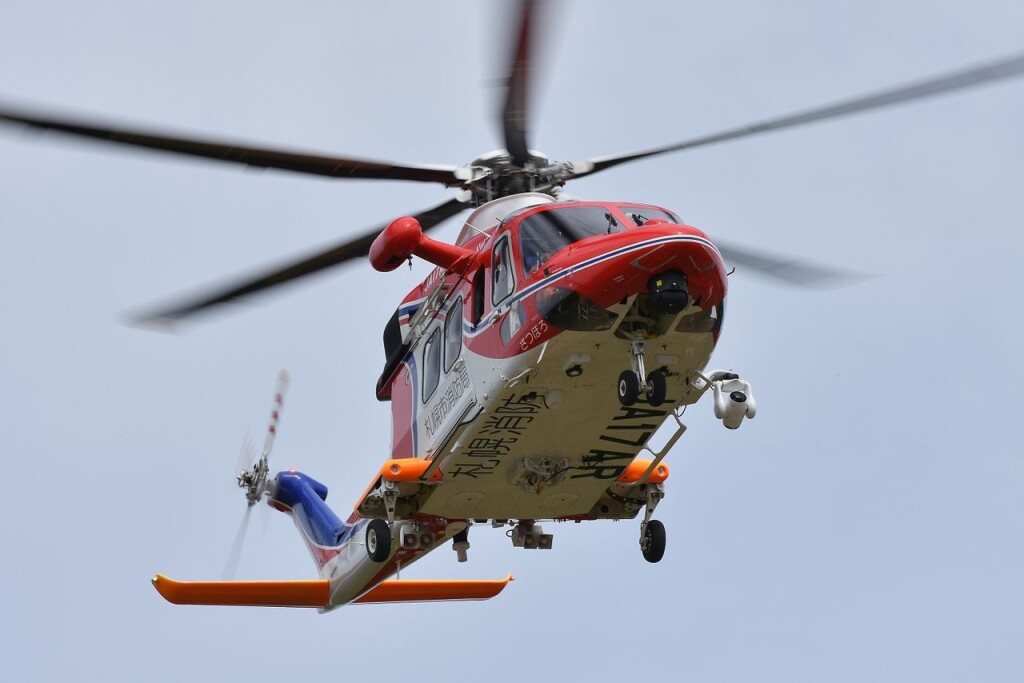
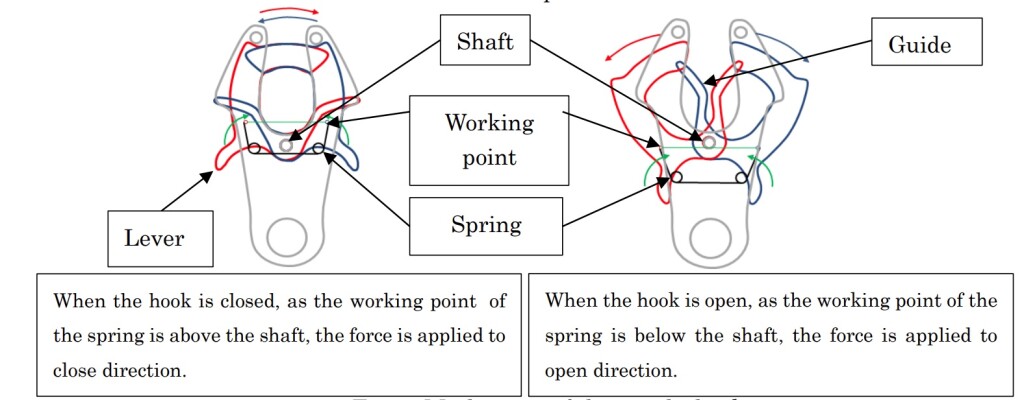
Recent Comments